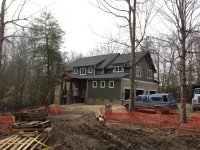I have a 2011 157" ecoboost. The 157" features the longest rear leaf springs and I have axle wrap on take-off when towing. As a direct injection engine, no fuel cleans the carbon off of the intake valves and because it has turbos, a top end cleaning blows out the turbo seals causing them to fail. I have defeated the stock evaporative emissions system and capture all the gook that would get sent into the engine to burned from the crankcase and collect it is a giant catch-can. The catch-can is the work-around for the carbon on the intake valves problem. An additional problem is that the 3.5L direct injection pump seal can fail and dump raw fuel straight into the engine oil. Furthermore, the air to air intercooler has caused all kinds of hassles from misfires to causing the engine to gulp water and hydrolock throwing a rod in the process. The solution for the intercooler problem is to adapt a water to air intercooler but Ford has not done this yet, and neither are their any aftermarket solutions. Because of oil dilution, early fleet trucks started stretching out and breaking timing chains at 85,000 miles. The fix is more frequent oil changes and the catch-can.
The trucks hauls well enough and I hoof 10,000 pounds down the road at 75 mph irregularly and light loads frequently. In the city with heavy loads the issue is brakes. The truck can do it, but it is hard on the brakes.
Ford does offer a heavy half option, which i would look at if I was in the market. The 2.7L ecoboost has some design changes that make it superior to the 3.5L in terms of longevity in my opinion. The 5.0L gets better milage than the ecoboost while towing, but lacks the power of the EB engines. For 2015, Ford is joining the civilized world and finally offering a heated steering wheel. I suggest you avoid getting the sunroof as they all screw up in time and are noisier.
Catch-can.
Max load and acceleration is not a problem with the ecoboost. 6mpg at 65-75 mph though.



